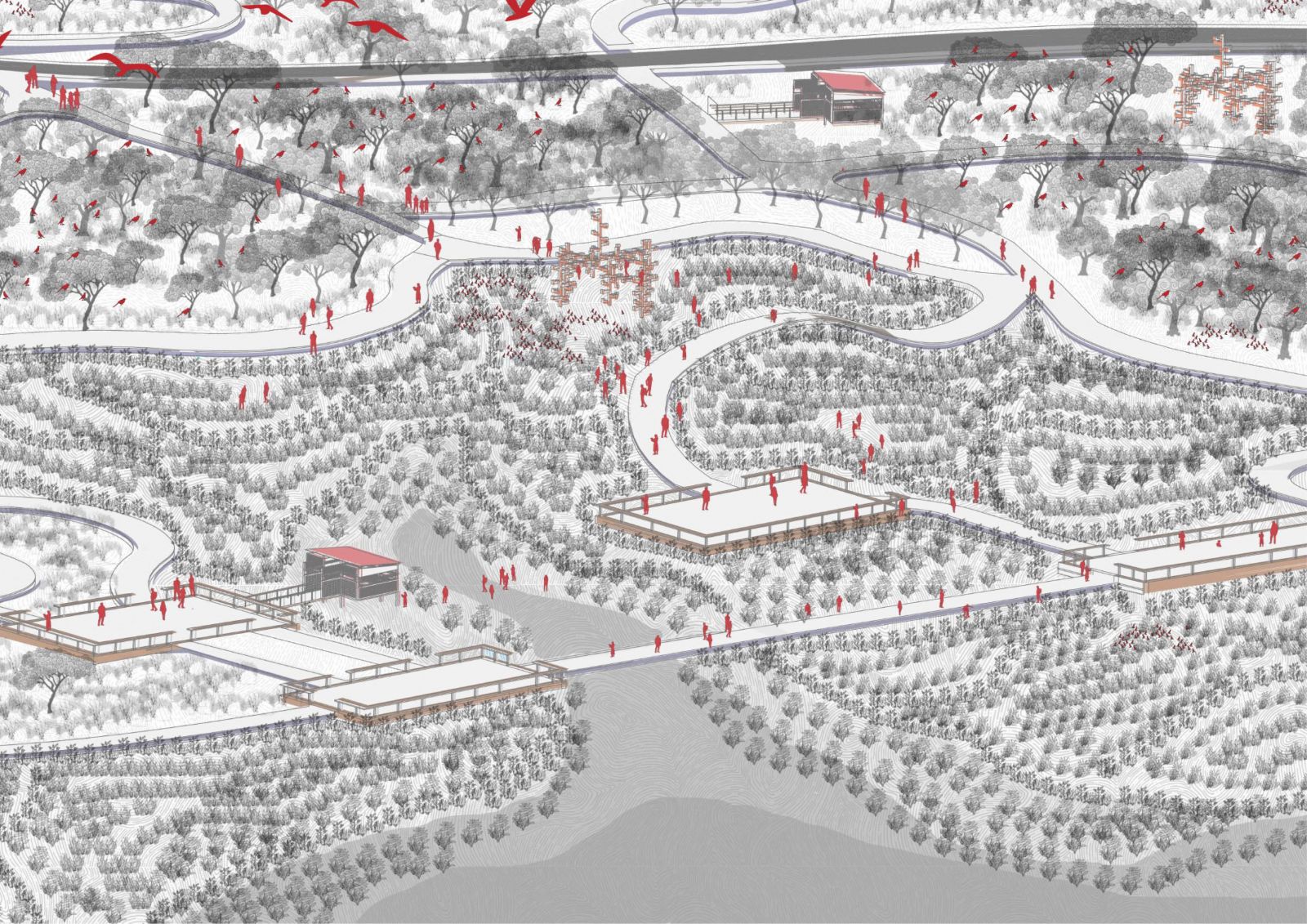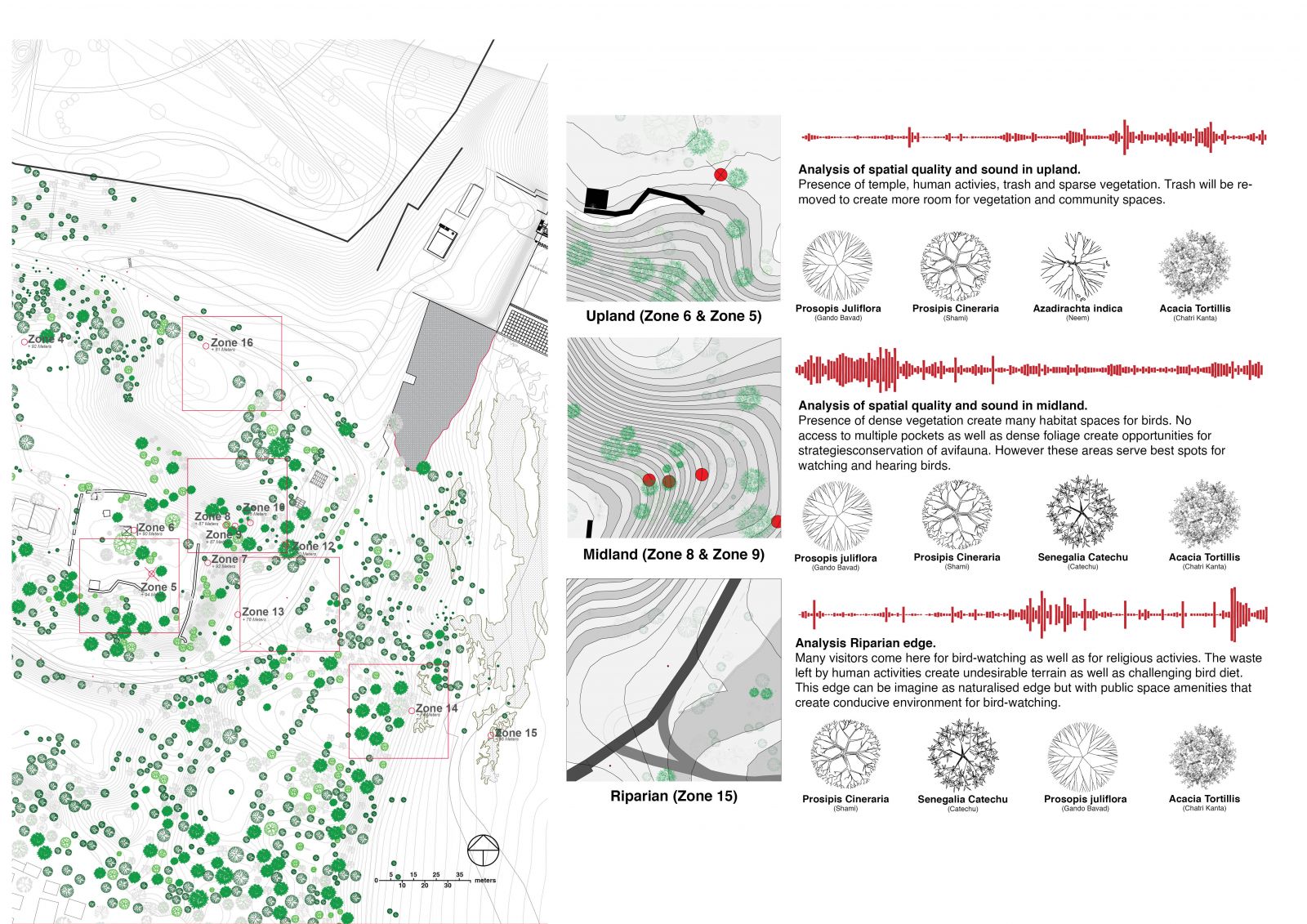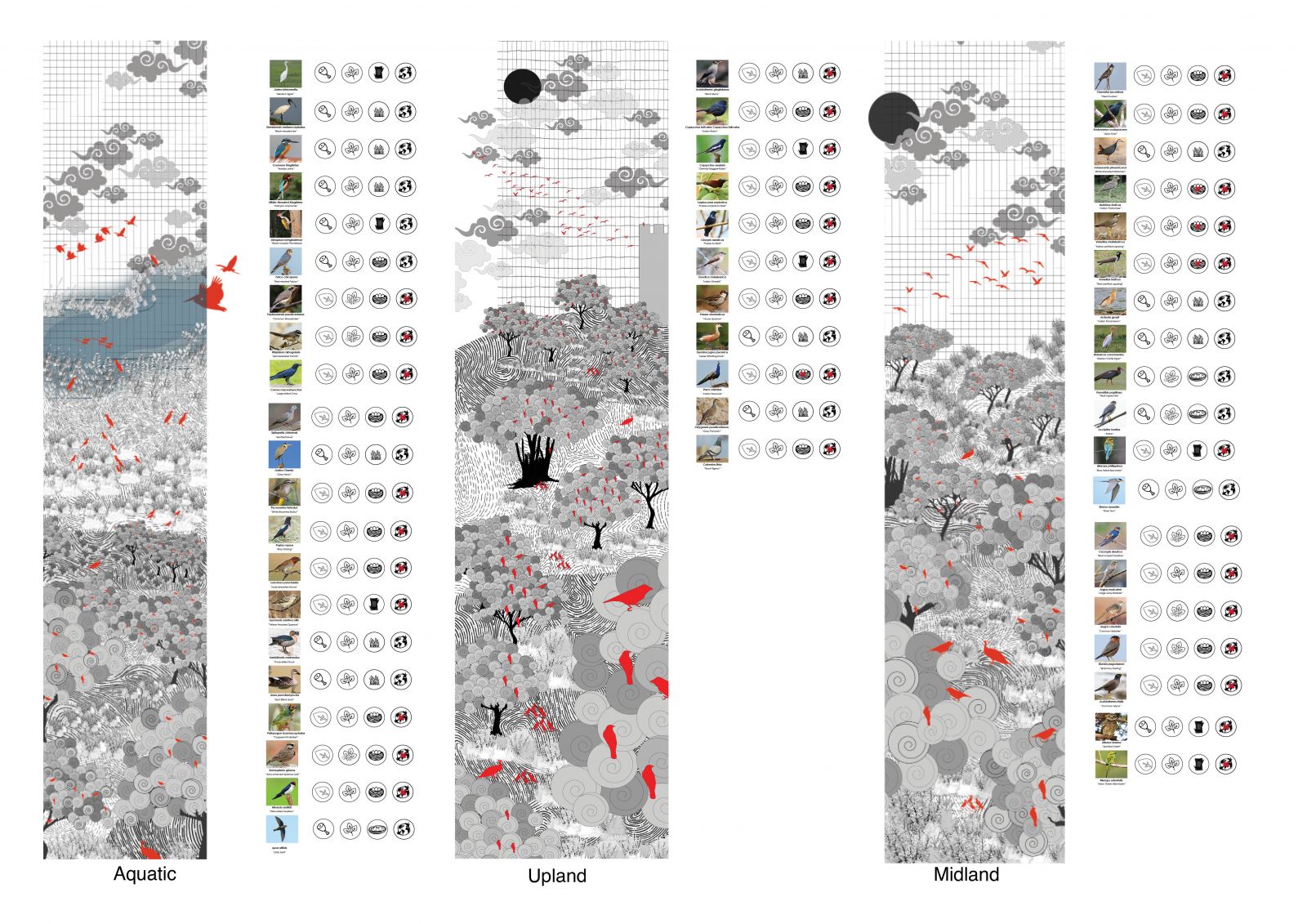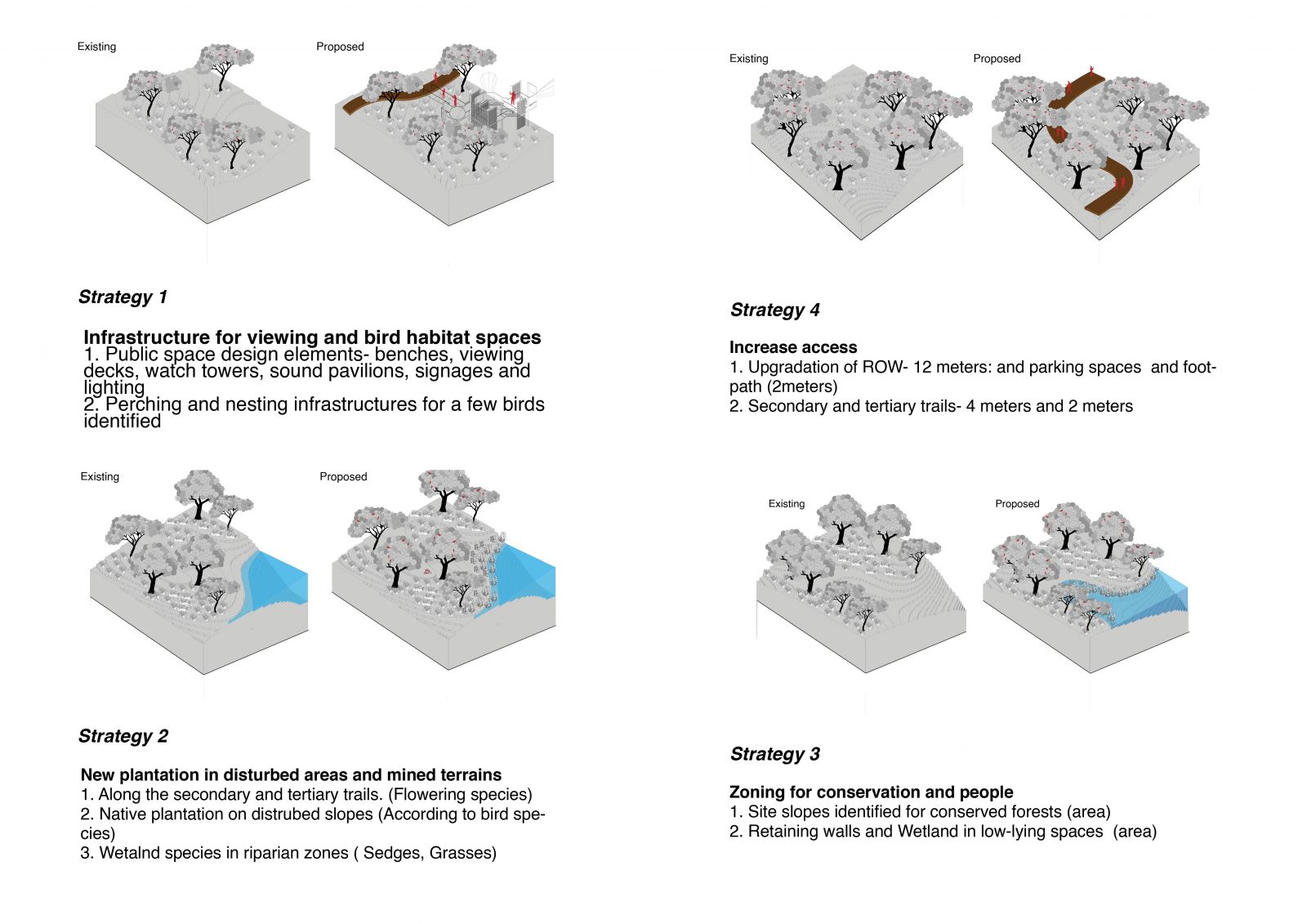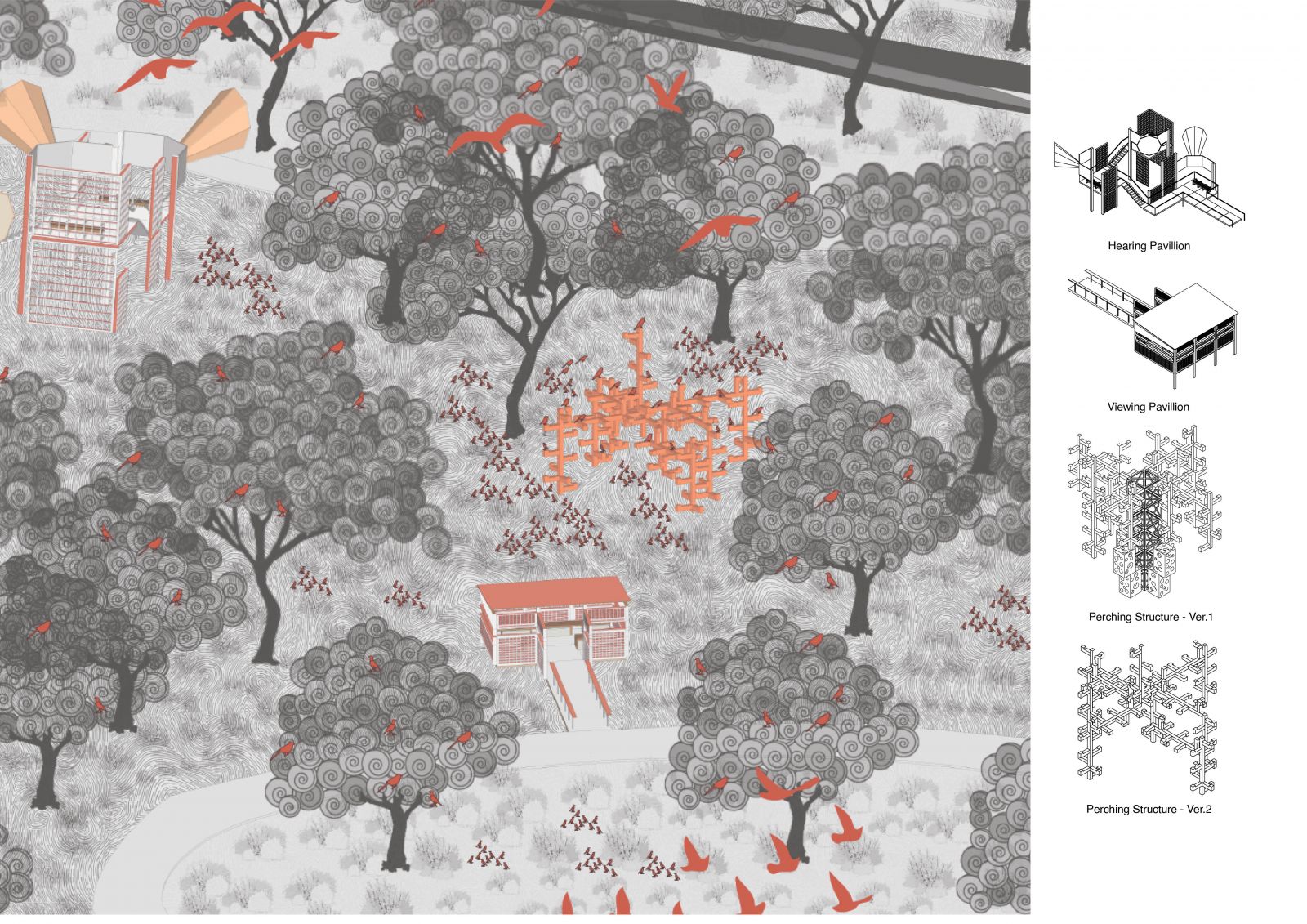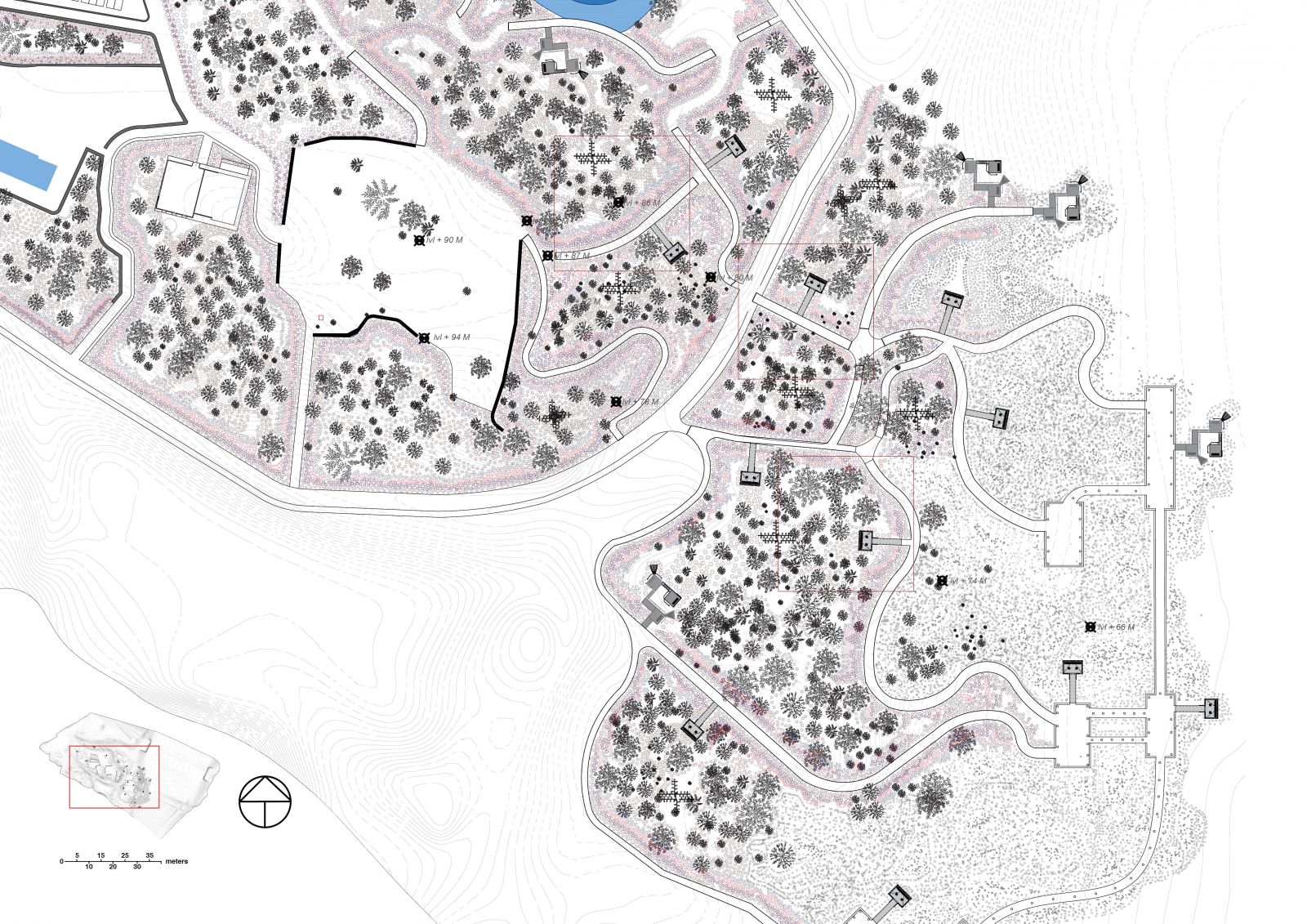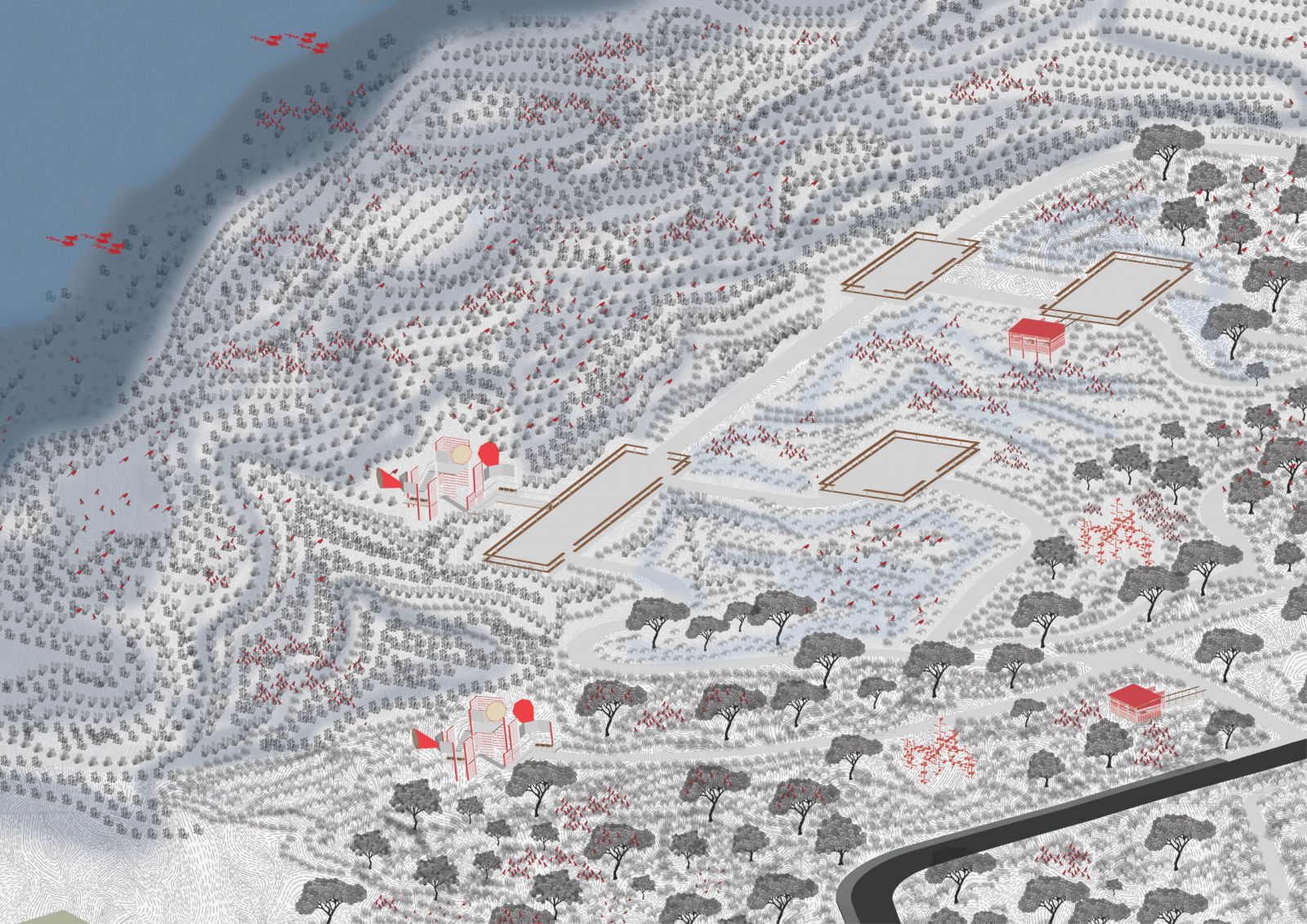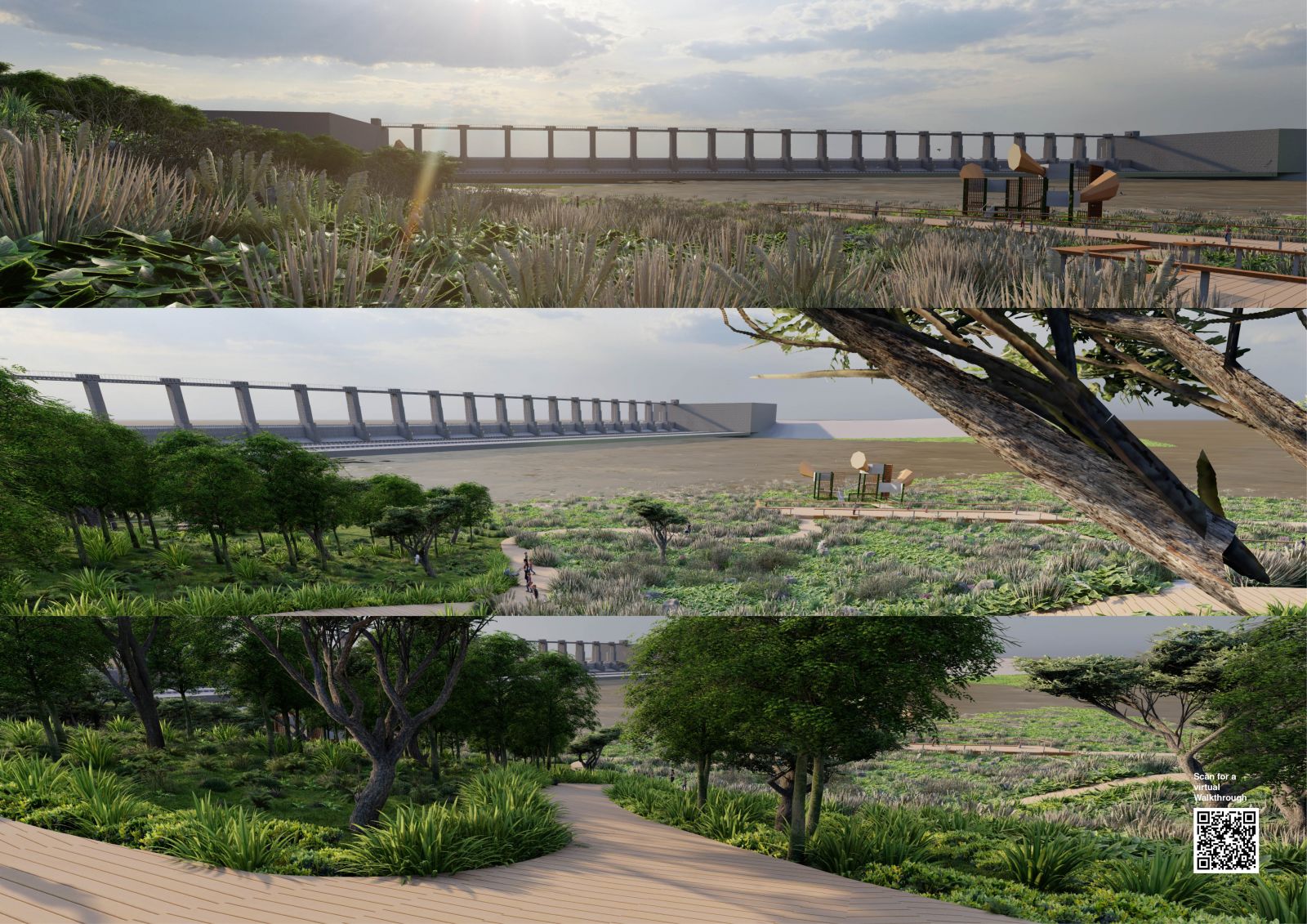Your browser is out-of-date!
For a richer surfing experience on our website, please update your browser. Update my browser now!
For a richer surfing experience on our website, please update your browser. Update my browser now!
The Soundscaping project aims to enhance the biophony of the Sant Sarovar Dam area in Gandhinagar while promoting conservation and limiting illicit activities. This soundscaping initiative focuses on creating designated conservation zones for local avifauna while allowing for responsible access. Strategy One: Access: Facilitate controlled access to the site, ensuring that visitors can experience the natural sounds of birds without disturbing their habitats. This approach helps reduce illicit activities while fostering a deeper appreciation for the local ecosystem. Strategy Two: Landscaping and Ecology- Implement minimal interventions that enhance the existing landscape and promote ecological health. This includes the careful introduction of native species and the creation of conservation zones that support diverse bird populations. Strategy Three: Interventions- Design thoughtful infrastructures, such as observation points and soundscaping features, that encourage interaction with the environment. These elements provide opportunities for visitors to engage with the natural world, enhancing their experience and fostering a connection to the rich avifauna of the area. Through these strategies, Birdsong envisions a harmonious balance between human access and wildlife conservation, celebrating the sounds of nature while promoting ecological stewardship.
